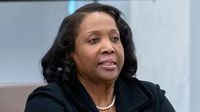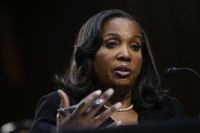The U.S. Supreme Court is poised to play a decisive role in two of President Donald Trump’s most consequential economic battles this fall: his push to fire Federal Reserve Governor Lisa Cook and a legal fight over sweeping tariffs imposed under the International Emergency Economic Powers Act. Both cases, set against a backdrop of partisan tension and historic precedent, carry profound implications for the independence of America’s central bank and the future of U.S. trade policy.
On September 18, 2025, the Trump administration filed an emergency appeal with the Supreme Court, seeking to overturn a federal judge’s ruling that allowed Lisa Cook to remain on the Federal Reserve’s Board of Governors despite Trump’s attempt to remove her. The move came just a day after the Federal Reserve, with Cook participating, cut its benchmark interest rate for the first time since December 2024—a decision that signaled more cuts could be on the horizon. As reported by Axios and SCOTUSblog, the administration’s request thrust the issue of central bank independence into the national spotlight, with legal observers noting the high stakes for both economic stability and executive power.
Trump’s effort to oust Cook is rooted in allegations of mortgage fraud that predate her 2023 appointment to the Fed board by then-President Joe Biden. According to SCOTUSblog, William Pulte, a housing regulator, alleged that Cook signed mortgage agreements for two properties in 2021—one in Michigan and one in Georgia—each time affirming the property would serve as her primary residence. Trump cited these allegations as “sufficient cause” for removal, stating in a letter posted to Truth Social that Cook’s actions “call into question [her] competence and trustworthiness as a financial regulator.” Cook has denied any wrongdoing, and subsequent reporting has suggested that financial documents may undermine the government’s claims.
The legal wrangling began in earnest after Trump formally fired Cook on August 25, 2025. Within days, Cook challenged her dismissal in federal court. On September 9, U.S. District Judge Jia Cobb issued an order requiring the Federal Reserve to allow Cook to remain on the board while litigation continues. Cobb found that Cook was “substantially likely” to succeed on her claim that the Trump administration had violated the Federal Reserve Act’s ‘for cause’ removal requirement, which, in Cobb’s interpretation, applies only to conduct during a governor’s tenure—not before. Cobb also ruled that Cook likely had a property interest in her position, entitling her to notice and a hearing before removal under the Fifth Amendment’s due process clause.
The Trump administration quickly appealed, but the U.S. Court of Appeals for the D.C. Circuit, by a 2-1 vote, left Cobb’s order in place. Judge Bradley Garcia, joined by Judge J. Michelle Childs, agreed that Cook was likely to prevail on her due process claim. In contrast, Judge Gregory Katsas, a Trump nominee, dissented, arguing that the president’s determination of cause should be given broad deference and that Cook’s job does not confer a property right.
Solicitor General D. John Sauer, representing the administration, told the Supreme Court that the lower courts’ theory would “wreak havoc on sensitive presidential decision-making.” Sauer argued, “The lower courts’ primary theory is that principal officers are akin to teachers or lower-level civil servants and can thus claim a property interest and an entitlement to notice and a hearing before removal. This theory is untenable.” He further maintained that “so long as the President identifies a cause, courts cannot review that determination.”
Cook’s attorneys, meanwhile, warned the Supreme Court that her removal could destabilize markets and threaten the independence of the Federal Reserve. In their brief, they wrote, “Temporarily removing her from her post would threaten our Nation’s economic stability and raise questions about the Federal Reserve’s continued independence—risking shock waves in the financial markets that could not easily be undone.” The argument was clearly aimed at Chief Justice John Roberts, who has previously acknowledged the Fed’s “unique historical tradition” and its importance as a quasi-private entity insulated from day-to-day presidential control.
The case is unprecedented: if Trump succeeds, it would mark the first time in the Federal Reserve’s 111-year history that a sitting governor was fired by a president. The legal question at the heart of the dispute is who gets to define “cause” for removal—Congress, the courts, or the president. Trump’s team has invoked a 1901 Supreme Court precedent to argue for wide executive discretion, while Cook’s defenders say the Fed’s independence is too vital to be left to presidential whim.
Adding another layer of intrigue, Stephen Miran, a Trump appointee, was sworn in as a new Fed governor just before the central bank’s September policy meeting. Miran reportedly favored a larger rate cut than the one ultimately approved. Fed Chair Jerome Powell, when pressed about Miran’s dual role as a White House employee and Fed governor, stated, “The agency is strongly committed to maintaining our independence. And beyond that, I really don’t have anything to share.”
While the Cook case simmers, the Supreme Court has also agreed to hear arguments on November 5, 2025, in a separate but equally consequential case: a challenge to Trump’s tariffs imposed under the International Emergency Economic Powers Act. As Axios reported, a federal appellate court struck down the tariffs in August 2025, ruling they were an overreach of executive authority, but allowed them to remain in place until October 14 to give the administration time to appeal. The stakes are high—Trump has argued that rolling back the tariffs would be “catastrophic” for the U.S., saying, “If we don’t have [the tariffs], we’re not going to have a country. We’re going to be in very, very serious financial trouble.”
Despite such dire warnings, most outside experts dispute the notion that ending the tariffs would spell disaster. Nonetheless, the tariffs have proven to be a significant source of government revenue, generating $30 billion in August 2025 alone—more than four times the amount collected in the same month a year earlier. This has helped improve the fiscal outlook, at least in the short term, even as critics warn of higher grocery prices and economic distortions.
Both cases, now on the Supreme Court’s fast track, will test not only the boundaries of presidential power but also the resilience of America’s economic institutions. The coming months promise high drama in Washington, as the justices weigh arguments that could reshape the balance between politics and policy for years to come.
As the nation watches, the Supreme Court’s decisions on these matters will reverberate far beyond the marble halls of justice, shaping the future of the U.S. economy and the independence of its most powerful institutions.

